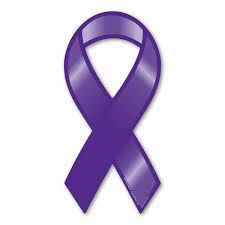August 31st: International Overdose Awareness Day
- Raquel
- Sep 7, 2022
- 3 min read
What you can do on August 31st and beyond to get involved.
International Overdose Awareness Day (IOAD) is a global event that aims to raise awareness of overdose and reduce the stigma of a drug-related death.
It was initiated in 2001 by Sally J. Finn at The Salvation Army in St Kilda, Melbourne. Since 2001, many community members as well as government and non-government organizations have held events to raise awareness and commemorate those who have been lost to drug overdose without stigma.
Goals of IOAD
To provide an opportunity for people to publicly mourn loved ones in a safe environment, some for the first time without feeling guilt or shame.
To include the greatest number of people in International Overdose Awareness Day events, and encourage non-denominational involvement.
To give community members information about the issue of fatal and non-fatal overdose.
To send a strong message to current and former people who use drugs that they are valued.
To stimulate discussion about overdose prevention and drug policy.
To provide basic information on the range of support services that are available.
To prevent and reduce drug-related harm by supporting evidence-based policy and practice.
To inform people around the world about the risk of overdose.
What You Can Do
1) Learn the signs of overdose
2) Carry naloxone
3) Share harm reduction tips
4) Advocate for drug policy reform
Signs of Opioid Overdose
Pinpoint pupils
Difficulty walking, talking, and/or staying awake
Cold and clammy skin
Dizziness and confusion
Shallow, laboured, or no breathing
Unresponsive
Blue/grey lips or finger tips
Responding to an opioid overdose: Call 9-1-1, administer naloxone, stay with the person
Naloxone
Naloxone is a fast-acting drug used to temporarily reverse the effects of an opioid overdose. Naloxone can restore breathing within 2-5 minutes. It is active in the body for 20-90 minutes. However, the effects of most opioids can last longer. This means that overdose can occur again.
Naloxone may be administered through a nasal spray (effects in 2-3 minutes) or injectable form (effects in 3-5 minutes).
Naloxone is safe for all ages. It only works if you have opioids in your system. It is safe to keep on-hand because it cannot be improperly used and does not create dependence.
In Canada, Naloxone is available without a prescription and can be picked up at most pharmacies or local health authorities. Note that naloxone kits expire and should be replaced after 18 to 24 months.
Harm Reduction Tips
Carry a naloxone kit and encourage others to do so
Don't use alone
Don't share / reuse supplies
Avoid mixing various types of substances and find out which substances used together carry the most risk of overdose
Use a small amount of a drug first to check the strength / your tolerance
Test your drugs before use if possible
Stay hydrated while using
Know your rights - in Canada, The Good Samaritan Act provides some legal protections for both the user and observer(s) of an overdose
We Need Drug Policy Reform and Safe Supply
Overdose deaths are preventable with widespread implementation of harm reduction strategies like overdose prevention centers and an evidence-informed model of decriminalization that includes budgeting for safe supply. Let's shift the current approach of criminalization to a public health perspective.
The opposite of addiction is connection. Today and going forward, let's spend more time listening to what people who use drugs need to be successful.

References
Centre of Addiction and Mental Health. (n.d.). Resources for International Overdose Awareness Day, August 31. Retrieved from https://www.camh.ca/en/camh-news-and-stories/camh-library-resources-for-international-overdose-awareness-day-august-31
Government of Canada. (2019). Naloxone: Save a life (fact sheet). Retrieved from https://www.canada.ca/en/health-canada/services/publications/healthy-living/naloxone-save-a-life-fact-sheet.html
Government of Canada. (2021). Opioid overdose. Retrieved from https://www.canada.ca/en/health-canada/services/opioids/overdose.html
Overdose Day. (n.d.). About the campaign. Retrieved from https://www.overdoseday.com/about-the-campaign/





Comments